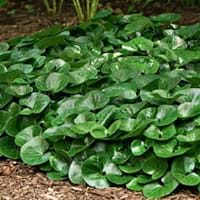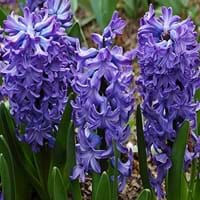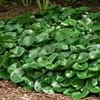Life Span
Annual and Perennial
Perennial
Type
Broadleaf Evergreen
Bulb or Corm or Tuber
Origin
Western Europe
Mediterranean, Western Asia
Types
Not Available
Not Available
Habitat
gardens, Lake Sides, Marshy ground, shade of upland trees, Shaded sites, Subtropical climates
Mediterranean region
USDA Hardiness Zone
4-8
4-9
AHS Heat Zone
Not Available
9-1
Sunset Zone
Not Available
21,22
Habit
Spreading
Clump-Forming
Flower Color
Green, Purple, Brown
White, Yellow, Red, Blue, Purple, Pink, Lavender, Violet
Flower Color Modifier
Bicolor
Bicolor
Fruit Color
Not Available
Not Available
Leaf Color in Spring
Dark Green
Green
Leaf Color in Summer
Dark Green
Light Green
Leaf Color in Fall
Dark Green
Several shades of Green
Leaf Color in Winter
Dark Green
Light Green
Leaf Shape
Cushion
Long slender
Plant Season
Spring, Summer, Fall, Winter
Spring, Winter
Sunlight
Partial shade, Full Shade
Full Sun, Partial Sun
Growth Rate
Medium
Medium
The pH of Soil
Acidic, Neutral
Acidic, Neutral
Soil Drainage
Well drained
Well drained
Bloom Time
Late Spring
Early Spring, Spring, Late Winter, Indeterminate
Tolerances
Not Available
Black Walnut Toxicity, Rabbit, Shade areas
Where to Plant?
Container, Ground
Container, Ground, Pot
How to Plant?
Divison, Rhizome division
chipping, Offsets, scooping, Twin scaling, Vegetative
Plant Maintenance
Low
Low
Watering Requirements
Average Water Needs
Medium
In Summer
Average Water
Lots of watering
In Spring
Moderate
Moderate
In Winter
Average Water
Average Water
Soil pH
Acidic, Neutral
Acidic, Neutral
Soil Drainage Capacity
Well drained
Well drained
Sun Exposure
Partial shade, Full Shade
Full Sun, Partial Sun
Pruning
Don't prune in winter, Prune in spring, Remove dead branches, Remove dead leaves
Remove damaged leaves, Remove dead branches, Remove dead leaves
Fertilizers
All-Purpose Liquid Fertilizer
All-Purpose Liquid Fertilizer, General garden fertilizer, Time release fertilizer
Pests and Diseases
Ants, Slugs, Snails
Pests and diseases free
Plant Tolerance
Not Available
Black Walnut Toxicity, Rabbit, Shade areas
Flowers
Insignificant
Showy
Flower Petal Number
Not Available
Single, Double, Semi-Double
Foliage Texture
Medium
Medium
Foliage Sheen
Glossy
Glossy
Allergy
no allergic reactions
Asthma
Aesthetic Uses
Showy Purposes
Beautification, Bouquets, Cottage Garden, Landscape Designing, Showy Purposes
Beauty Benefits
No Beauty Benefits
Not Available
Environmental Uses
Air purification
Not Available
Medicinal Uses
Ear ache, Fever, Heart problems, Menstrual Disorders, Snakebite
Not Available
Part of Plant Used
Whole plant
Flowers
Other Uses
Not Available, Used in making tooth powder
Decoration Purposes, Showy Purposes
Used As Indoor Plant
No
Yes
Used As Outdoor Plant
Yes
Yes
Garden Design
Edging, Groundcover
Bedding Plant, Container, Cutflower, Mixed Border, Rock Garden / Wall
Botanical Name
ASARUM europaeum
Hyacinthus orientalis
Common Name
European Wild Ginger
Hyacinth, common hyacinth, garden hyacinth, dutch hyacinth
In Hindi
यूरोपीय जंगली अदरक
ह्यचीन्थ
In German
Europäische Wild Ginger
Hyazinthe
In French
Wild Ginger européenne
jacinthe
In Spanish
Wild Ginger Europea
jacinto
In Greek
Ευρωπαϊκή Wild Ginger
υάκινθος
In Portuguese
Wild Ginger Europeia
jacinto
In Polish
Kopytnik pospolity
hiacynt
In Latin
Gingiberi Europae Wild
et hyacinthinas,
Phylum
Magnoliophyta
Magnoliophyta
Class
Magnoliopsida
Liliopsida
Family
Aristolochiaceae
Liliaceae
Clade
Angiosperms, Magnoliids
Angiosperms, Monocots
Tribe
Not Available
Not Available
Subfamily
Not Available
Scilloideae
Number of Species
Not Available
Properties of European Wild Ginger and Hyacinth
Wondering what are the properties of European Wild Ginger and Hyacinth? We provide you with everything About European Wild Ginger and Hyacinth. European Wild Ginger doesn't have thorns and Hyacinth doesn't have thorns. Also European Wild Ginger does not have fragrant flowers. European Wild Ginger has allergic reactions like no allergic reactions and Hyacinth has allergic reactions like no allergic reactions. Compare all the properties and characteristics of these two plants. Find out which of these plant can be used as indoor plant. If you are interested to decorate your house and garden, find out aesthetic uses, compare them and select the plant which will beautify your surrounding. Along with beautification, try comparing medicinal and edible uses of European Wild Ginger and Hyacinth and you can choose the plant having best and most benefits.
Season and Care of European Wild Ginger and Hyacinth
Season and care of European Wild Ginger and Hyacinth is important to know. While considering everything about European Wild Ginger and Hyacinth Care, growing season is an essential factor. European Wild Ginger season is Spring, Summer, Fall and Winter and Hyacinth season is Spring, Summer, Fall and Winter. The type of soil for European Wild Ginger is Loam and for Hyacinth is Loam while the PH of soil for European Wild Ginger is Acidic, Neutral and for Hyacinth is Acidic, Neutral.
European Wild Ginger and Hyacinth Physical Information
European Wild Ginger and Hyacinth physical information is very important for comparison. European Wild Ginger height is 6.35 cm and width 27.30 cm whereas Hyacinth height is 10.20 cm and width 5.10 cm. The color specification of European Wild Ginger and Hyacinth are as follows:
European Wild Ginger flower color: Green, Purple and Brown
European Wild Ginger leaf color: Dark Green
Hyacinth flower color: White, Yellow, Red, Blue, Purple, Pink, Lavender and Violet
- Hyacinth leaf color: Green
Care of European Wild Ginger and Hyacinth
Care of European Wild Ginger and Hyacinth include pruning, fertilizers, watering etc. European Wild Ginger pruning is done Don't prune in winter, Prune in spring, Remove dead branches and Remove dead leaves and Hyacinth pruning is done Remove damaged leaves, Remove dead branches and Remove dead leaves. In summer European Wild Ginger needs Average Water and in winter, it needs Average Water. Whereas, in summer Hyacinth needs Lots of watering and in winter, it needs Average Water.



